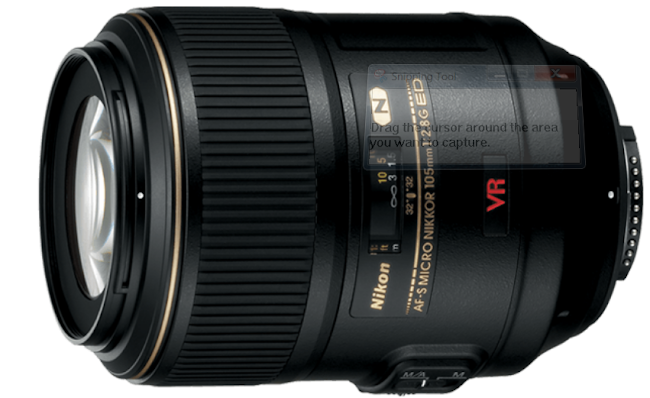Macro photography opens up a fascinating world, allowing you to capture stunning details of small subjects like insects, flowers, and everyday objects. To achieve the best results, you'll need a high-quality macro lens that can deliver sharp, close-up images. In this guide, we'll explore the best lenses for macro photography, highlighting their features, strengths, and ideal use cases.
Understanding Macro Photography
Macro photography involves taking close-up shots of small subjects, making them appear larger than life. Key aspects include:
- Magnification: The ability of the lens to enlarge the subject. A 1:1 magnification ratio means the subject appears life-size on the camera sensor.
- Working Distance: The distance between the lens and the subject. A longer working distance allows you to photograph skittish subjects without disturbing them.
- Aperture: A wider aperture (lower f-number) lets in more light and creates a shallow depth of field, which helps isolate the subject from the background.
Top Macro Lenses
Here are some of the best macro lenses available, suitable for various camera brands and budgets:
1. Canon EF 100mm f/2.8L Macro IS USM
Overview: The Canon EF 100mm f/2.8L Macro IS USM is a popular choice among Canon users, offering superb image quality and versatility.
Key Features:
- 1:1 magnification ratio.
- Hybrid Image Stabilization (IS) system.
- Ultra-Low Dispersion (UD) lens elements for reduced chromatic aberration.
- Weather-sealed construction.
Pros:
- Excellent sharpness and color accuracy.
- Effective image stabilization.
- Suitable for both macro and portrait photography.
Cons:
- Slightly heavier and more expensive.
Best For: Canon users seeking a high-quality, versatile macro lens.
2. Nikon AF-S VR Micro-Nikkor 105mm f/2.8G IF-ED
Overview: This Nikon macro lens is renowned for its sharpness and advanced vibration reduction, making it ideal for handheld macro photography.
Key Features:
- 1:1 magnification ratio.
- Vibration Reduction (VR) technology.
- Extra-Low Dispersion (ED) glass elements.
- Silent Wave Motor (SWM) for fast, quiet autofocus.
Pros:
- Outstanding image quality.
- Effective VR for handheld shooting.
- Robust and durable build.
Cons:
- Higher price point.
- Autofocus can be slow in low light.
Best For: Nikon photographers looking for a high-performance macro lens with VR.
3. Sony FE 90mm f/2.8 Macro G OSS
Overview: The Sony FE 90mm f/2.8 Macro G OSS is a top choice for Sony mirrorless camera users, offering superb optics and optical image stabilization.
Key Features:
- 1:1 magnification ratio.
- Optical SteadyShot (OSS) stabilization.
- Aspherical and ED glass elements.
- Smooth, quiet autofocus.
Pros:
- Exceptional sharpness and detail.
- Effective OSS for handheld shooting.
- High build quality.
Cons:
- Premium price.
- Slightly slower autofocus compared to other lenses.
Best For: Sony mirrorless camera users seeking a premium macro lens with stabilization.
4. Tamron SP 90mm f/2.8 Di VC USD Macro
Overview: Tamron's SP 90mm macro lens offers excellent performance and value, compatible with various camera brands.
Key Features:
- 1:1 magnification ratio.
- Vibration Compensation (VC) technology.
- Ultra Silent Drive (USD) for fast, quiet autofocus.
- Moisture-resistant construction.
Pros:
- Great image quality.
- Effective VC for handheld shooting.
- Affordable price.
Cons:
- Build quality slightly lower than top-tier brands.
- Manual focus can be challenging.
Best For: Photographers seeking a high-quality, budget-friendly macro lens.
5. Sigma 105mm f/2.8 EX DG OS HSM Macro
Overview: Sigma's 105mm macro lens combines affordability with impressive performance, making it a favorite among many photographers.
Key Features:
- 1:1 magnification ratio.
- Optical Stabilizer (OS) for handheld shooting.
- Hyper Sonic Motor (HSM) for fast, quiet autofocus.
- Super Multi-Layer Coating to reduce flare and ghosting.
Pros:
- Excellent sharpness and contrast.
- Effective OS for handheld macro photography.
- Competitive pricing.
Cons:
- Autofocus can hunt in low light.
- Slightly heavier than some competitors.
Best For: Photographers looking for a well-rounded, affordable macro lens.
Choosing the Right Macro Lens
When selecting a macro lens, consider the following factors:
- Camera Compatibility: Ensure the lens is compatible with your camera brand and mount.
- Magnification and Working Distance: Choose a lens with a magnification ratio and working distance that suits your subjects and shooting style.
- Image Stabilization: Stabilization is beneficial for handheld shooting, reducing the risk of blur.
- Budget: High-end lenses offer superior performance but come at a higher cost. Determine your budget and find the best lens within that range.
Conclusion
Macro photography is a rewarding genre that allows you to explore and capture the intricate details of the tiny world around us. The lenses listed above represent some of the best options available, each offering unique features and benefits. Whether you're a Canon, Nikon, Sony, or third-party lens user, there's a macro lens that can help you achieve stunning close-up images.
By carefully considering your needs and preferences, you can choose the best macro lens for your photography, ensuring you capture the beauty and detail of your subjects with precision and clarity.
#MacroPhotography #BestMacroLenses #CanonMacroLens #NikonMacroLens #SonyMacroLens #TamronMacroLens #SigmaMacroLens #Photography #CloseUpPhotography #LensGuide





